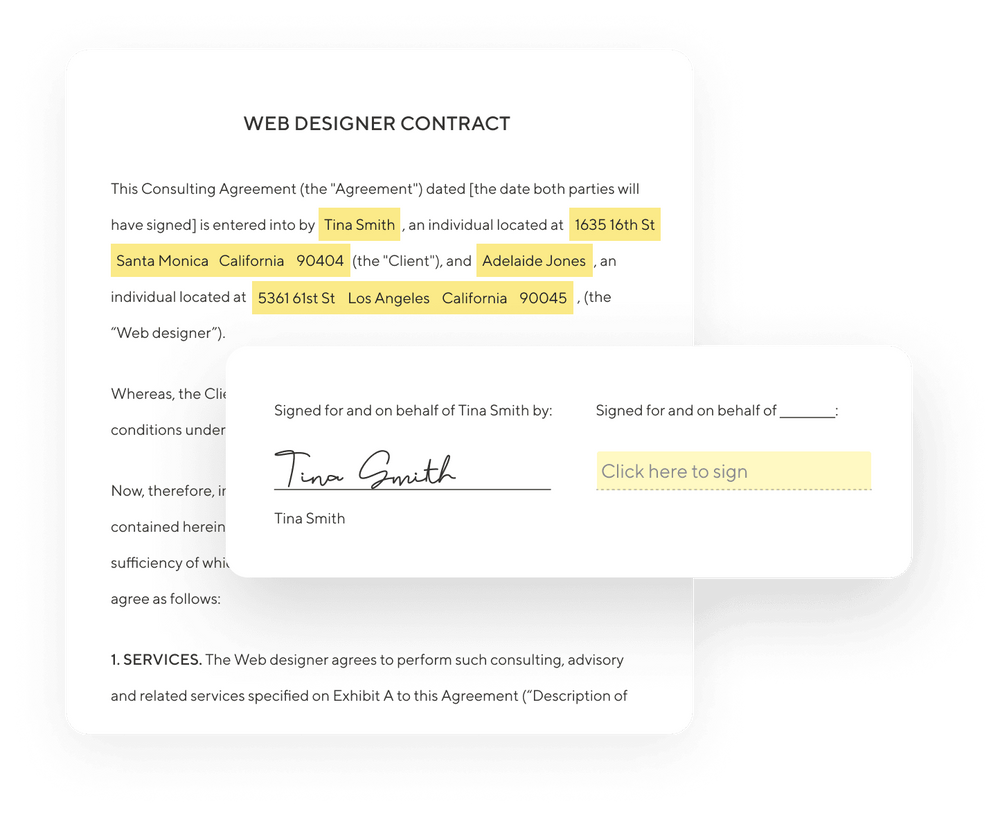Being a freelancer comes with its own set of challenges, and one of them is firing difficult clients. You may find yourself in a situation where you need to end your working relationship with a toxic client. That can be a difficult decision, but it can also be beneficial in the long run.
Knowing how to fire a client the right way is essential for maintaining your professional reputation and for avoiding any legal issues. This blog post will provide an overview of how to fire a client the right way as a freelancer.
Introduction to a freelancer-client relationship
Being a freelancer means you have a certain freedom over who you work with and what you are prepared to tolerate. It means having to put yourself first and protect your interests. Not working for a company allows for the possibility of encountering an ideal client that you are going to love working with. Or, you can end up having to deal with a problematic client.
All that being said, if you feel like a certain problem client is affecting your business relationship with other clients, you need to make a tough call and start making an exit strategy.
It's better to get rid of a particular client than to waste time that could be spent helping satisfied customers or networking to find new customers who truly value your services.

Identifying nightmare clients and how to deal with them
As a freelancer, if you feel like a client is difficult to work with, unresponsive, or is not meeting their contractual obligations, it might be time to end the client relationship. It is important to be aware of these signs so that you can take action before the situation gets too out of hand.
In addition to these, you should also be aware of any warning signs that the client may be unhappy with your services. If the client is constantly giving you negative feedback or making unreasonable requests, it may be time to part ways.
Knowing when to fire a client is the first step in ending a client relationship. It is important to be able to identify the signs that a client should be fired. Here are a few signs that you should watch for.
Consistent late payments
If your client is consistently late in making payments and is racking up a lot of unpaid invoices, then it is a sign that they may not be taking your services seriously. This can be particularly problematic if you depend on the payments to pay your bills or to purchase supplies.
However, if this is the only mishap in an otherwise great business relationship, you might need to have an honest conversation with your client. They may not be a nightmare client, just negligent. If they don't improve the cash flow, take your expertise in a new direction.
Poor communication
It is important to have good communication with your clients. Poor communication can lead to misunderstandings and errors. If you find that your client is not responding to your emails or calls and you don't want to part ways, you can try a few things to get back on track.
- Determine the most effective communication route. Depending on the time zone differences, this might be Slack, text messages, phone conversations, or email.
- Ask questions; the more, the better. Maybe your client is not a communicative type, but you shouldn't be shy if that can influence the work you produce.
- Over-communicate. Ask for feedback early and frequently and provide frequent progress updates.

Unreasonable demands
If your client is making unreasonable demands or pushing you to do something that is outside of your scope of work, then it may be time to fire them. For example, say you are a freelance content writer, and you offer other services, such as social media management. You do outstanding work for your client writing blogs, but now they want you to manage their Instagram account, too. For the same price, of course.
You can make a business decision to negotiate a package deal and offer a discount on your other services, or you can simply refer them to a social media manager who would be a better fit.
It is important to remember that you should be on the same page with good clients and not allow that one client to leave you with a bad experience.
Unprofessional behavior
It is important to maintain a professional relationship with your clients. If your client is not being professional or is disrespectful, then it is time to part ways. This can include anything from rude emails to abusive language.
Some people don't like getting constructive criticism, and sometimes your client's idea may not align with what they hired you for. However, getting spews of insults because you are just trying to do your job is unacceptable. Very blatantly point out that you are to be treated with human decency and respect, or you are out.
The importance of professionalism
When it comes to firing a client, it is important to remain professional. Instead of letting your emotions get the better of you and receive negative backlash, take a step back and evaluate the situation before taking any action. You should also remember to remain professional when communicating with the client. This means avoiding any personal attacks or accusations, as well as avoiding sharing too much of your personal information that is not immediately important for the work that you do for your client.
It is also important to remember that the client may not be aware of how you feel or that you have wanted to go a different direction. They may have a completely different perspective of your relationship.
It is important to take the time to explain your decision and why you are ending the relationship. This will help to ensure that the client understands your decision and will help to maintain a positive relationship even after you part ways.

Steps to take before firing a bad client
Before you decide to fire a client, it is important to take a few steps to ensure that you are making the right decision. Here are a few steps that you should take:
- Make sure that the situation is not salvageable: Before you fire a client, it is important to evaluate the situation and see if you can make it work. If you tried to talk to the client nicely about the issues that have been bothering you, if you tried to draw up a new contract to try to deal with the bad behavior, or if you don't have the mental capacity to deal with all the red flags, it's time to go.
- Document the situation: Before you fire the client, it is important to document the client’s mistakes and unfulfilled obligations in writing. Make copies of the conversations in question, or take screenshots of the client's comments on your work. This will help to ensure that you have evidence in case the client disputes your decision or tries to take legal action.
- Get advice from a trusted source: If you are unsure about whether or not to end your client relationship, it is important to get advice from a trusted source. Maybe they have had a difficult client with whom they have resolved their problems and can advise you on how to do the same. This could be a friend or mentor who has experience with firing bad clients.
- Review the terms of the contract and ensure that you are not in breach of the contract: As a business owner, your working relationship is crucial for your small business. If you disrespect the agreement with no necessary documents to back up that decision, that can seal your future with similar employees in the industry.
- Consider whether there are any outstanding projects or commitments that need to be completed before ending the relationship: You should never leave a client hanging. If you cannot respect a customer, how can you expect to avoid bad clients?
Indy can help you avoid some problems by giving you an easy way to create contracts for all your clients. Use Indy’s Contracts tool to draft, sign, send, track, and store your contracts. This will keep all of your documents organized. Using professional contracts brings clarity and protection to your work.
Strategies for breaking the news
Once you have decided to end your client relationship, it is important to have a plan for breaking the news. Be sure to communicate the news respectfully and professionally. You should always begin by thanking the client for their business and for the opportunity to work together. This can help to ensure that the client does not feel insulted or taken for granted.
Here are a few strategies for breaking the news to a client:
- Be direct and honest: When it comes to talking to a client, it is important to tell that person directly and honestly. Be sure to explain the reasons why you are ending the relationship and make sure that they understand that this is not a personal decision.
- Give them notice: It is important to give the client notice before you end the relationship. This will give them time to adjust and look for a replacement.
- End on a positive note: Even though you are parting ways, it is important to end on a positive note. This will help to maintain a good relationship and will help to protect your reputation.

Tips for making the transition smooth
Once you have broken the news to the client, it is important to make the transition as smooth as possible. Here are a few tips for making the transition smooth:
Prepare a replacement client first
In theory, you should not have any income breaks. However, this isn't always possible.
You should already have a new client lined up before you even talk to your bad client.
When you're rushing to get a replacement client, you run the risk of picking up another poor client.
Give plenty of notice
Don't abandon your client. If you are aware that your contract is up for renewal, let the other party know a few weeks in advance that you do not want to extend it. If you aren't bound by contract, ask them how much time they think is enough to find a replacement, and agree on a final date when you are leaving.
With less consistent clients, it may be as simple as declining numerous jobs in a row by stating that you are too busy, and then ultimately declaring:
'I fear that moving forward, I won't have time to perform any tasks for you.'
It's simple, respectful, and clear enough to not leave room for misinterpretation.
Refer friends
It is a good idea to offer assistance to the client during the transition. This could include offering to help them find a replacement freelancer or offering to answer any questions they may have.
Recommend a writer in your network to your client. There is always someone who is at a different stage in their writing career, and your difficult client might be a terrific client for them.
Don't burn any bridges
Parting ways on a high note is always a good strategy. This client might prove to be an ideal client in the future if you choose to work with them again.
Also, if you decide you are not going to be collaborating again, they might still refer you to their friends in need of a freelancer.

The benefits of having a standardized procedure
Having a standardized procedure for firing a client can be beneficial for both parties. This can help to ensure that the process is handled respectfully and professionally and can help to avoid any legal issues.
It can also ensure that all of the relevant information is not missing and that any outstanding payments are paid on time. This way, you protect your interests, and it will make it easier to handle any legal or financial issues that may arise.
A standardized procedure can alleviate some of the pressure off of you and help to maintain your professional reputation.
Steps to take after firing a client
Firing a client can be a very daunting process that can leave a bad taste in the mouth, but it shouldn't be. You can take steps to protect yourself and your business. Here are a few steps that you should take:
- Follow up with the client: Once the relationship has ended, it is important to follow up with the client. This will help to ensure that all payments have been made and that any other issues have been addressed.
- Update your records: Once the client has been fired, it is important to update your records. This includes any contracts, invoices, or other documents that were associated with the client.
- Reflect on the experience: It is important to reflect on the experience. This will help you identify any lessons learned and will help you avoid toxic clients in the future.
Dealing with negative repercussions
Unfortunately, firing a client can sometimes still lead to negative repercussions. You may receive negative reviews or find that the client has spread negative rumors about you. It is important to be prepared to handle these situations in a professional and respectful manner.
If you receive negative reviews, it is important to respond in a polite and professional manner. You should thank the client for their feedback and offer to address any issues they may have. This can help to ensure that the client does not feel insulted or taken for granted and can also help to maintain your professional reputation.
If the client has spread negative rumors about you, be a bigger person and show respect, even if you don't think it is deserved. You should state the facts of the situation and provide any relevant evidence to support your position.
Conclusion
Freelancers have the right to choose the clients they work with, and sometimes it is necessary to sever ties with clients who are not a good fit.
Knowing how to fire a client the right way is essential for maintaining your professional face and avoiding any legal issues. This blog post provided an overview of how to fire a client the right way as a freelancer. By identifying the signs that a client should be fired, remaining professional throughout the process, and taking the appropriate steps after firing a client, you can help to ensure that the transition is as smooth as possible.
Want to ensure that your next client is a better fit for your business? Check out how to find your ideal clients.



